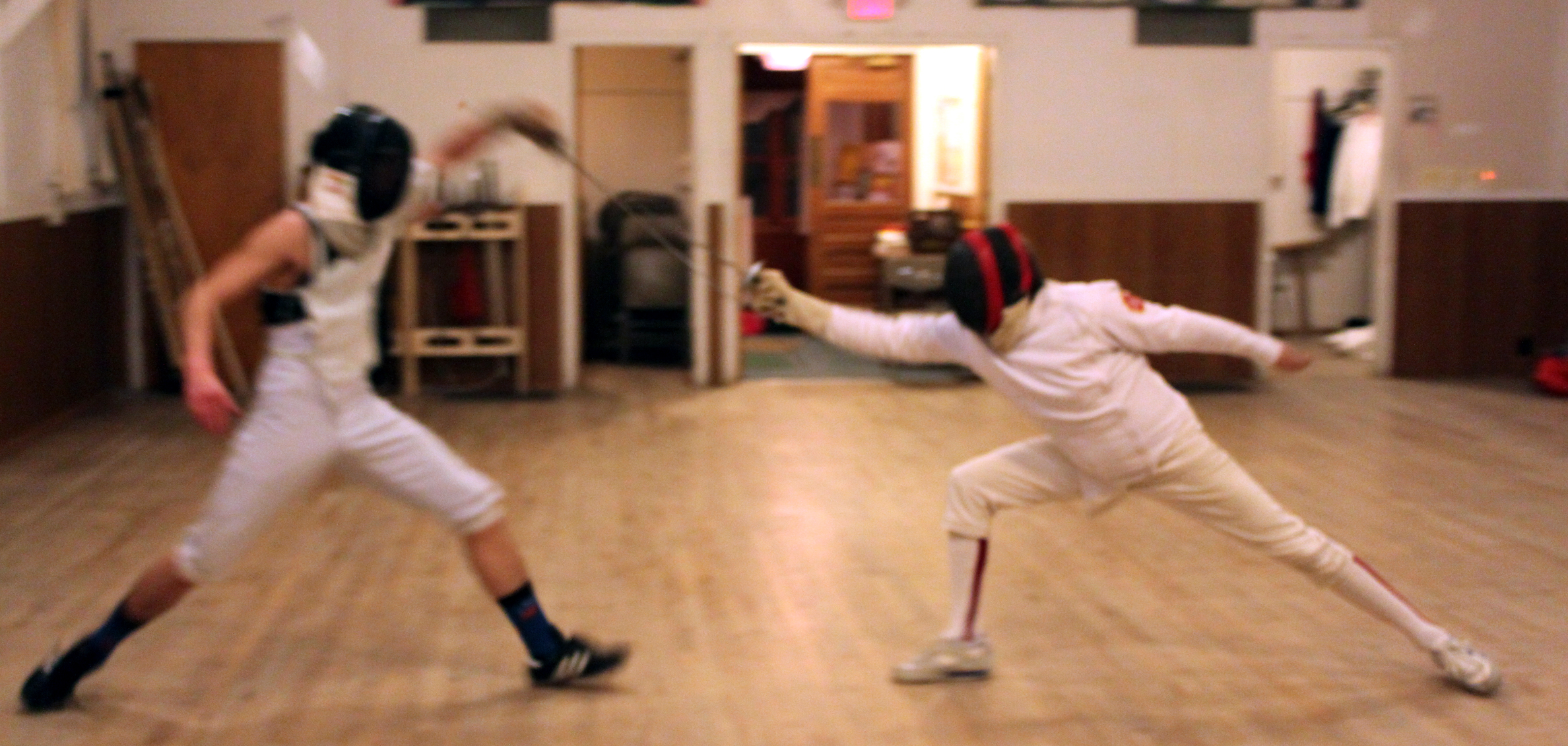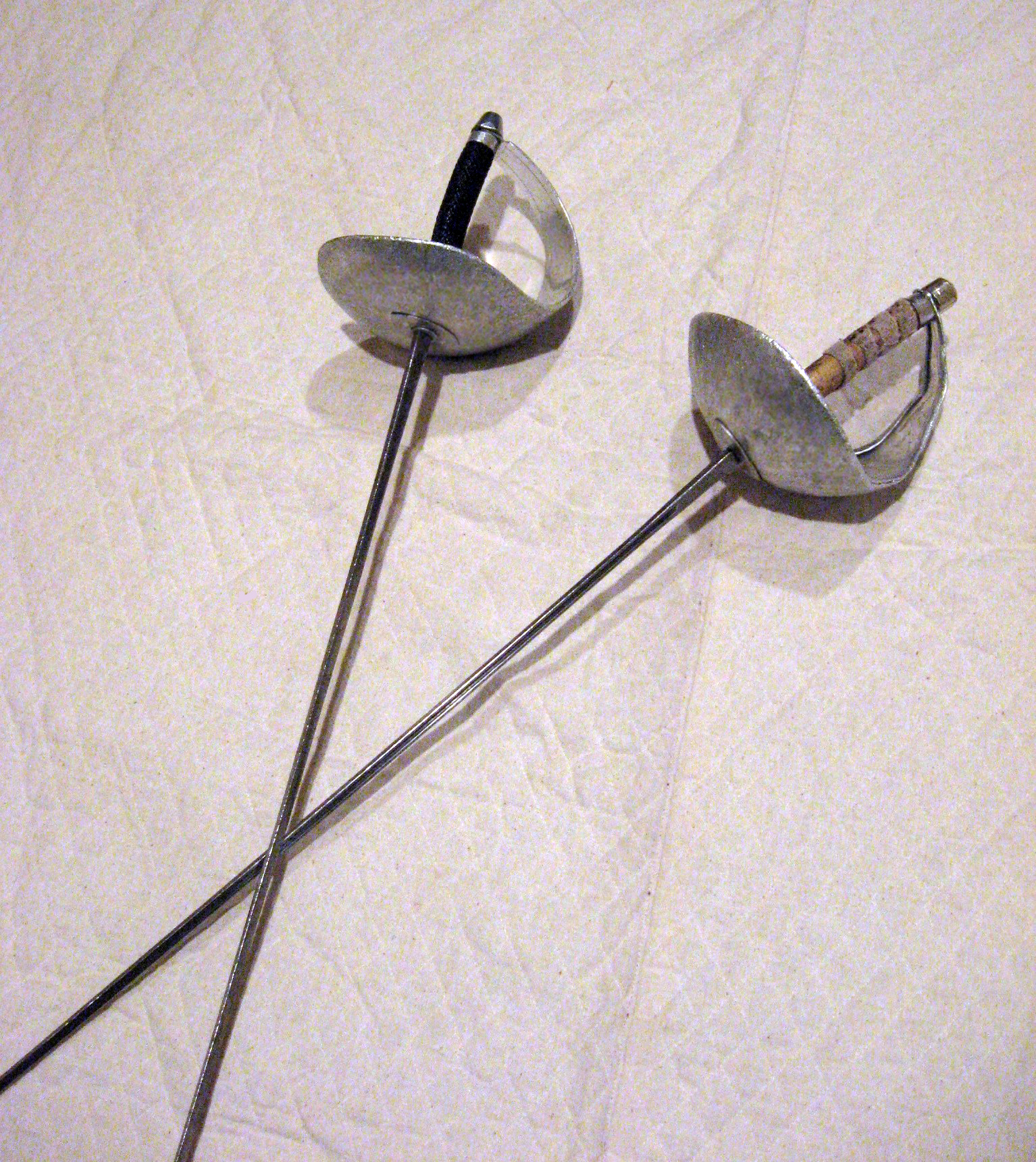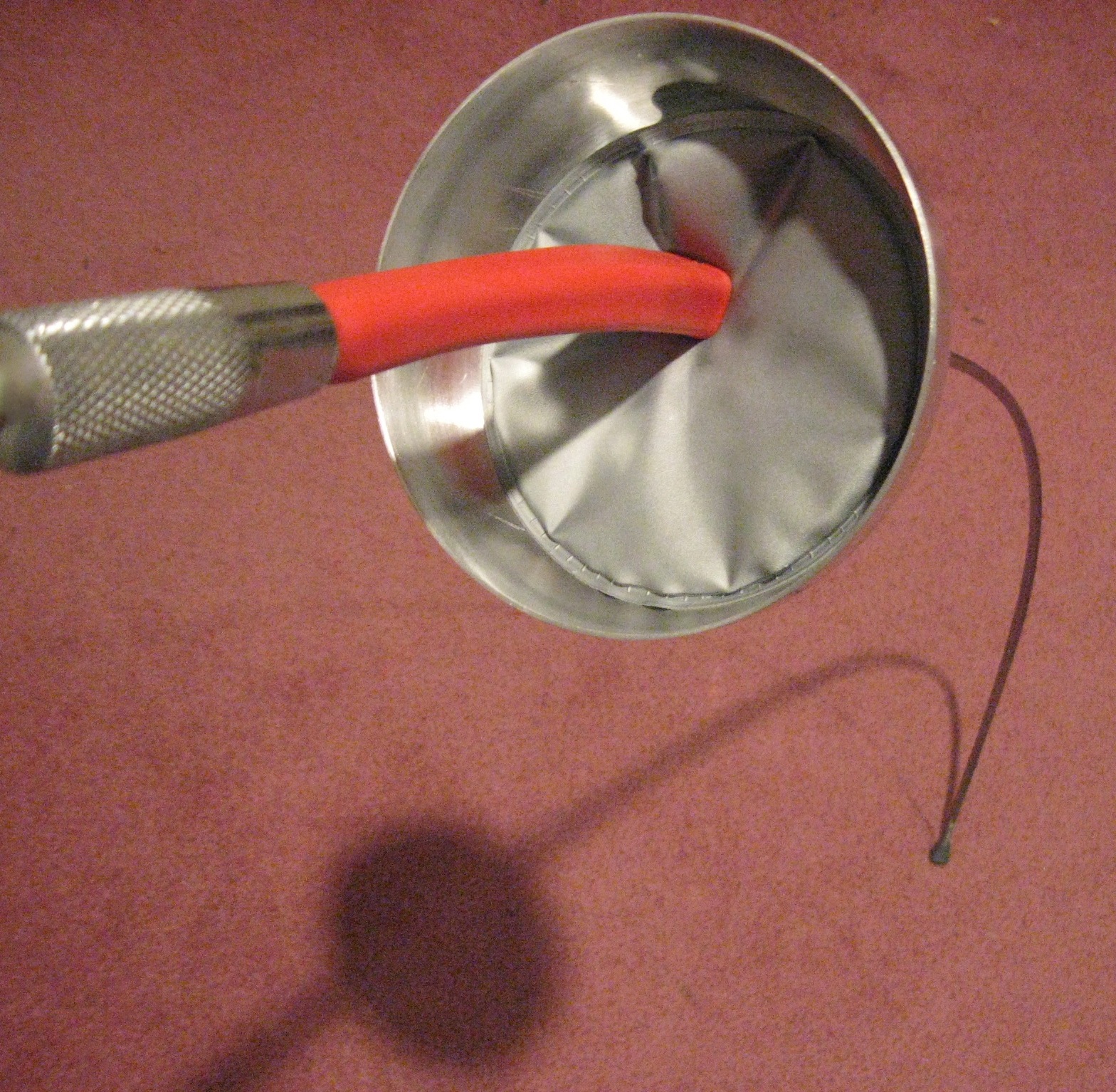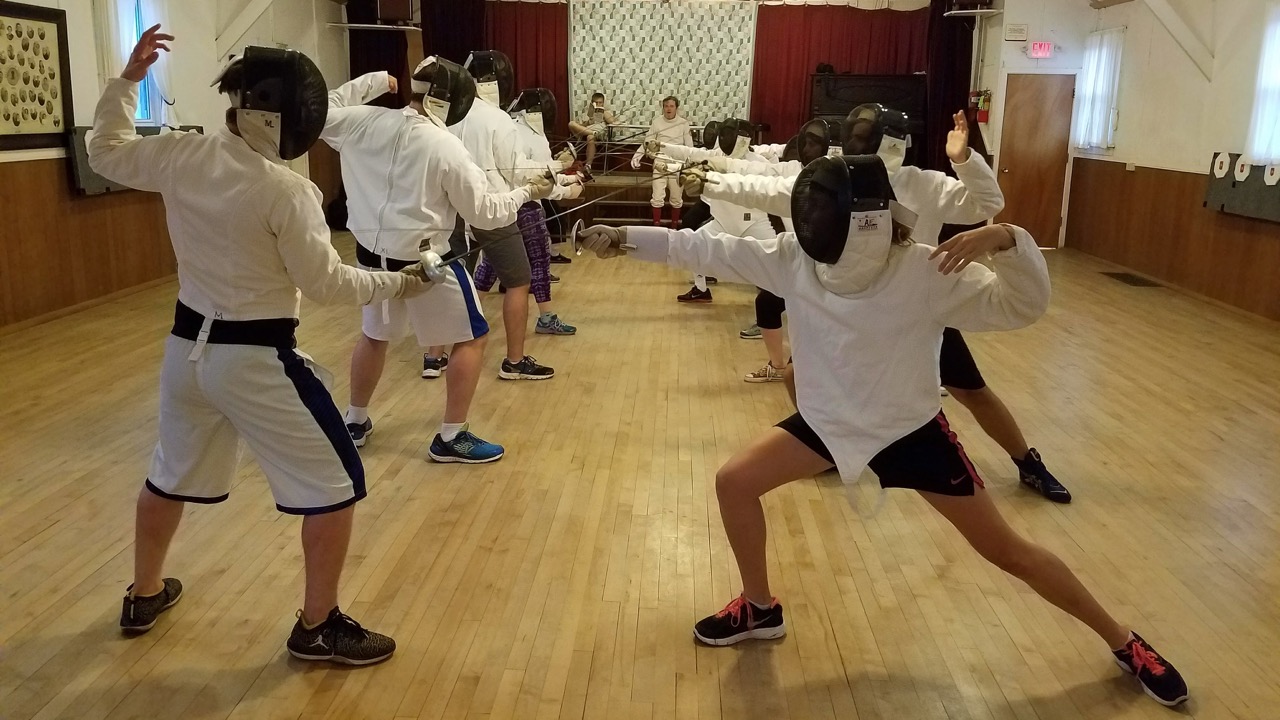Modern Sport Fencing

Often called Olympic fencing; almost exclusively amateur. Slim, light, flexible blades and sturdy protective equipment allow pure athletes to distil the renaissance combat form to a highspeed science. Since about 1900, three diverse sword arts have evolved in the hands of Italian, Spanish, French and Hungarian masters into the modern foil, sabre, and epee.
The three weapons share a common sword length and nearly identical equipment, rules, footwork and narrow, lengthwise fields of play, and each is wielded with a single hand only. But each is suited to a distinctly different personality.
Foil
The lightest of the weapons with the smallest guard. Scores with point-thrust only. The target is your opponent's torso. When both fencers land thrusts close to the same moment, a system of attack priority determines which fencer, if any, gets the touch. These characteristics make Foil the closest in spirit to 18th-century Smallsword, a true martial Art of Defense.
Sabre

This light weapon has a knuckle-bow guard, scores with point-thrust AND with cutting action, on your opponent from the hips upward. A system of attack priority similar to foil, but much more difficult to judge, determines which fencer, if any, gets the touch. Its play has roots in 19th century dueling-sabre with earlier roots in Hungarian and Mongolian mounted sabre combat. It is by nature a fast-moving, swashbuckling fencing form.
Epee

The heaviest of the three weapons has a large bell-guard, scores with point-thrust only on ANY PART of your opponent. Who lands the thrust first, by 1/25th of a second, gets the touch. There are "double touches." Its roots are in the 19th century dueling-sword which in turn is a decedent of 18c Small Sword with elements of renaissance rapier play. It is by nature a cat-and-mouse game of waiting, exact distance and picking off tiny targets like the edge of a glove peeking out from behind the guard, but like the other weapons requiring powerful, whole-body action for success.
Generally ...

Many of us casual fencers play with all three weapons, but serious competitors usually focus on one of the three. All three of the weapons are wired for electronic scoring in tournament competition - the club does have electric scoring equipment. (For more on tournaments, see the USA Fencing on the Resources page.) Non-wired weapons are commonly used for practice, lessons and casual play.
Any given evening at the Ann Arbor Sword Club, you might find any or all of the three weapons in casual use by people with little to 60 years experience with them.
